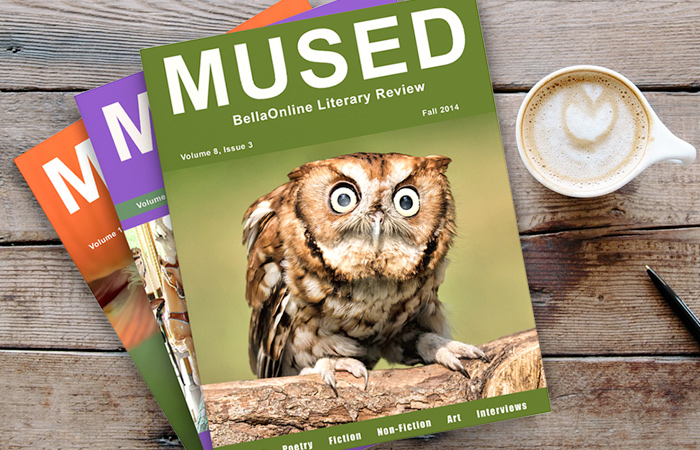Adding Details to Your Story
When we readers begin reading your non-fiction, true life story, we are looking forward to being able to learn something new through the eyes of another human being. If we've never left the United States, we want to feel what it's like to grow up in a quiet village in remote India. If we're a young woman, we want to get a sense of what it's like to deal with the challenges of being an eighty-year-old woman dealing with the busy streets of New York City. Whatever your story is, whatever your age or gender or race, there are people who are reading your story who are vastly different from you and who are fascinated by your point of view. In order for them to truly understand the world you're describing, you need to give them details.Let's say you're telling a story of your first date in rural Arkansas in the 1960s. You might take it for granted that the weather that August evening was hot and sticky, and that the air was full of the buzzing of cicadas. For you that seems natural. However, imagine that a teenage boy in Afghanistan is reading your story and he is fascinated by Arkansas, but he has no idea what it's like there. You are his window into this strange new world. Help him to see the details.
Sight
First, think about sight. What did the world you're describing look like? Again, imagine a complete stranger is reading this (because they are!) and they have no idea what your world looks like. Are the trees skinny and sparse? Are they thick, dark wood, laden with leaves? Is the ground dusty and dry? Is it mossy and rich green? Look through your story to see where you can give us the visuals. Most humans are very visually based, and the more detail you can give us about what we are seeing, the more we can "be there" with you in the story.
Look at this description of young girls in a ballet class, from Arabesque -
We would line up, and then, like drifting dandelion fluff -- or lumbering elephants -- cross the room on the diagonal, spinning and spotting, pirouetting our way dizzily across the studio.
See how we can visualize the various girls and their skills? This helps us understand more clearly what it was like to be a young girl in this class.
Sound
Sound is an important part of any story. Think of the gentle sound of a loved one's voice whispering our name. Think of the sharp scream of a child in distress that sets your heart pounding. How about the gentle bubbling of a brook next to your picnic spot? Sounds help convey emotion and set a scene. Find ways to draw sound into your story. Was the person's voice sharp and strident? Was it gentle and soothing? By reading about the sounds involved, we readers can more fully understand the situation.
Look at what is conveyed in the story My Trip to Iran, when a daughter is sitting with her elderly mother while they interview a caretaker.
Mother, who is quiet and polite during the interview, is vocal and belligerent after the woman leaves. She steadfastly repeats she does not need anybody's help.
The way the mother's voice changes is a clear indication of the inner turmoil she is going through.
Touch
We learn to value touch from the moment we are born. We seek the soft warmth of our mother. We enjoy gentle textures; we pull back from things that are too hot. Think about the landscape you are drawing for us. Is the area under the tree a carpet of fuzzy moss? Is the sky dotted with fluffy clouds? Let us be drawn in by our senses.
In The Love of Ghana we are not simply told "it was hot." Instead, we are brought into what it was like to sit in a classroom there -
The heat was oppressive and staggering. I could feel the drip, drip, drip of sweat falling from my ponytail.
See how the description of the touch brings the world to life and helps us to more clearly imagine ourselves in that situation?
Smell
For many people, the waft of a scent can bring them back to another time. Smelling lavender might remind them of their grandmother who adored the fragrance. Smelling rose might remind them of a country cottage they visited as a child. Scent can be a powerful mental trigger. Find ways to help us catch the smells of the world you are creating. Is the cottage by the sea tangy with the smell of salt air? Are the dark alleys of your New York childhood rank with sweat and trash? Help us feel what it was like to be where you were.
In The Composition of a Lie, a teenage girl is incredibly nervous about a situation she's in. She remembers,
The oppressive heat beat on me and sweat began to pour off my forehead in buckets. I was suddenly assaulted by the sharp smell of alcohol from my melting hairspray.
See how we get a sense of what it was like to be in that moment? Look for ways to include some hints of scent into your stories.
Taste
Of course, not every story will lend itself to the sense of taste. If your story is about a woman sitting in a waiting room nervously waiting to talk to a doctor, maybe there's no sense of taste involved at all. However, in many other stories there might be a taste that helps to draw us even more fully into the vision of what it was like to be there.
In the story Thirteen, we find ourselves in the mind of a young girl who fondly remembers her mother -
We sit at the kitchen table eating warm cinnamon buns. I eat the middle first: the gooiest, stickiest, sweetest portion of all. My mother turns up the volume to Patsy's "I Fall to Pieces." She dances around the yellowed linoleum like Pavlova in pink. She is magical, marvelous, miraculous.
We are drawn into that moment, the music, the movement, the colors, and the flavors.
Find ways to involve the senses in your stories, so that we can feel what it was like to live in that moment!
Non-Fiction Submission Guidelines
Adding Details to Your Story ← You Are Here
Bringing Emotions to Your Story
Story Ideas and Brainstorming
Writing About an Interesting Person
Calculating a Word Count
Proofreading Your Submission
Non-Fiction Submission Form

